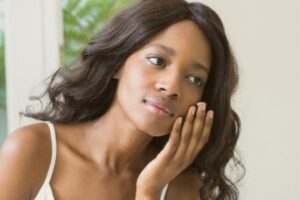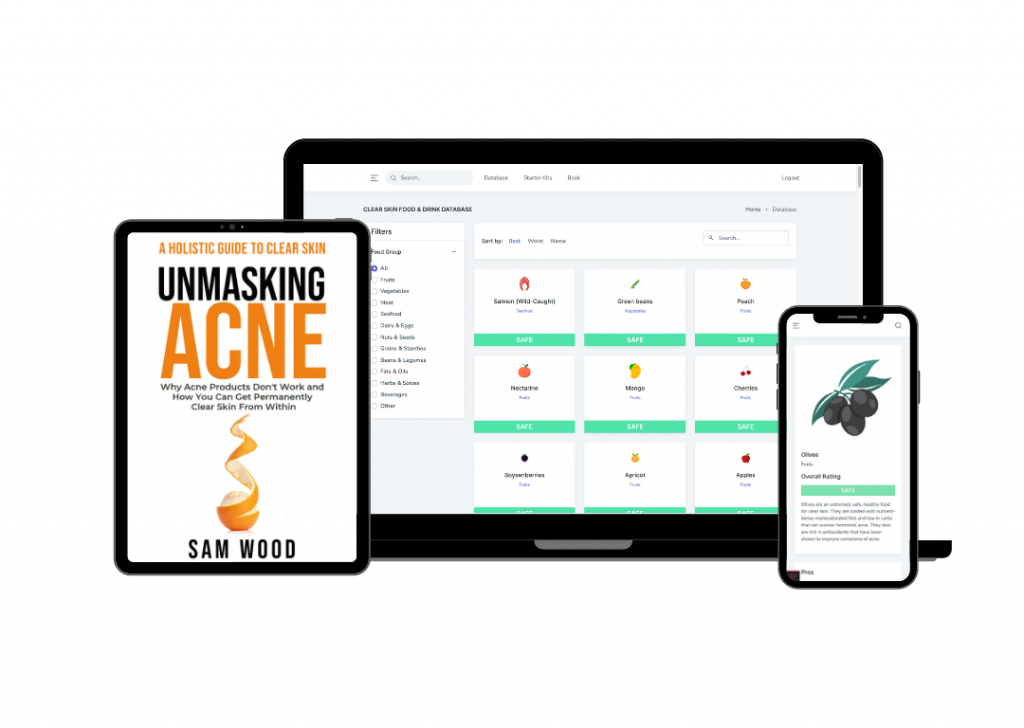Although notoriously resistant, acne can be effectively managed with the right treatment.
And luckily, there are plenty of options ranging from lifestyle habits and topical products to oral medication that will help address both the external and internal potential causes of this inflammatory condition.
So, because we know that acne is an inflammatory condition, it only makes sense that one of the treatment options that can be effective is an anti-inflammatory medication like hydrocortisone.
But how does hydrocortisone help acne, and is it the right treatment option for you?
Let’s take a closer look at this common topical medication and see if it could be the key to helping you achieve clear skin.
What is Hydrocortisone, and How Does it Work?
Hydrocortisone is the synthetic form of cortisol naturally produced in our bodies by the adrenal glands.
Cortisol is the primary stress hormone that belongs to the group of hormones known as glucocorticoids, which have the main function of increasing sugars (glucose) in the bloodstream and the availability of substances that repair tissues.
This is how cortisol suppresses inflammation in the bodily tissues and controls the metabolism in the muscles, fat, liver, and bones.
Therefore, its synthetic counterpart, hydrocortisone, is primarily used to provide a similar action for those who may have a deficiency in cortisol or for conditions that require extra anti-inflammatory support.
Hydrocortisone works by mimicking the effects of cortisol, binding to special receptors called glucocorticoid receptors.
This then suppresses the inflammatory response by:
- Reducing the number of inflammatory chemicals produced by the body.
- Inhibiting the migration of leukocytes (white blood cells) to the site of inflammation.
However, in addition to its anti-inflammatory action, hydrocortisone also has immunosuppressive effects, meaning it can reduce the activity of the immune system by decreasing the activity of lymphocytes, a type of white blood cell responsible for producing antibodies used to attack invading bacteria, viruses, and allergens.
This is why hydrocortisone is sometimes used to treat conditions like allergies, swelling, asthma, injuries, and autoimmune diseases caused by overactive immune responses.
Does Hydrocortisone Help Acne?
Although acne is caused by an inflammatory immune response to an overgrowth of bacteria, hydrocortisone is not commonly used to treat acne.
This is because hydrocortisone won’t actually affect the overgrowth of bacteria, and it can make acne worse in some cases by suppressing the immune system and masking the issue over time.
As already mentioned above, hydrocortisone suppresses the cells fighting the bacteria, so the main cause of acne goes unaddressed, which means the condition is likely to come back in full force after the course of hydrocortisone is finished.
So, while hydrocortisone can help calm the redness and inflammation associated with acne, it’s generally not the best treatment for this particular condition, and there are more effective options available for those seeking acne relief.
Side Effects of Using Hydrocortisone for Acne
Because hydrocortisone is a steroid, it has some potential side effects, especially when used long-term or in high doses.
Some potential side effects of using hydrocortisone for acne include:
- Redness and irritation.
- Excessive skin dryness.
- Peeling and flaking.
- Thinning skin.
- Easy bruising.
- More severe acne flare-ups.
- Rashes.
- Swelling and itching.
- Steroid withdrawal syndrome (SWS.)
While it’s safe to say that most people don’t usually experience any significant problems while using it, hydrocortisone is still capable of causing these side effects, which is why it’s recommended to be taken with caution and in moderation.
Additionally, if you are experiencing any of the mentioned side effects and discomforts, it’s best to consider stopping the treatment and consulting with your healthcare provider about alternative options to address your skin concerns.
5 Hydrocortisone Alternatives That Will Help You Get Rid of Acne
If you are having second thoughts about trying out hydrocortisone to get rid of acne, here are five alternatives that you can consider:
Salicylic Acid
Salicylic acid is the gold standard of acne treatments because it gives the skin exactly what it needs to heal acne.
On the surface, salicylic acid helps soothe the skin and reduce the symptoms associated with an inflammatory outbreak, such as redness, swelling, and irritation.
Additionally, salicylic acid also penetrates deep into the pores and dissolves the “glue” made up of unshed dead skin cells, oil, and cellular debris that’s causing the clog.
This helps to keep the pores clear and prevents new pimples from forming on a deeper level.
Additionally, salicylic acid can also have a mild brightening effect on the skin and can gradually fade hyperpigmentation left by old acne.
Mandelic Acid
Mandelic acid is an increasingly popular acne treatment naturally derived from the hydrolysis of an extract of bitter almond.
Slightly different than salicylic acid, mandelic acid has been extensively studied for its uses in treating common skin concerns such as photo-aging (premature skin aging caused by UV damage), irregular pigmentation such as melasma and age spots, as well as both inflammatory and non-inflammatory acne.
One of these studies shows that different percentages of mandelic acid can, in some cases, have the upper hand in successfully treating inflammatory acne over salicylic acid and that using mandelic acid to treat acne can have fewer side effects on the skin.
Therefore, if your skin is on the sensitive side and you are dealing with inflamed acne, low-percentage mandelic acid might be a good option to consider.
Azelaic Acid
Azelaic acid is a dicarboxylic acid naturally found in wheat, rye, and barley, and a distant relative to the more popular alpha and beta hydroxy acids.
When it comes to its effect on acne, azelaic acid has fantastic antibacterial properties that target many different strains of bacteria, including C.acnes, which is the one responsible for acne on the skin.
Additionally, while azelaic acid doesn’t exfoliate the skin, it does stabilize cellular turnover, which can be helpful in some cases of acne where there is an overproduction of keratin, a protein that makes up the skin’s outermost layer.
This action can help keep the pores clear and prevent the formation of comedones, which are the beginning stage of what will turn into an inflamed pimple if not treated.
Lastly, azelaic acid is an excellent pigment-inhibiting agent, which means that, besides helping reduce inflammation on the skin, it can also help fade dark spots and discoloration left on the skin after a pimple has healed.
Benzoyl Peroxide
Benzoyl peroxide is a fairly simple and straight-to-the-point component found in many over-the-counter cleansers, gels, and ointments intended to help inhibit the overgrowth of the acne-causing bacteria and relieve some of the symptoms associated with acne.
Benzoyl peroxide works by infusing the pores with oxygen, which is lethal to the anaerobic bacteria that prefer an airless environment such as a clogged pore to thrive.
This can help soothe some minor inflammatory lesions in as little as a few days of consistent benzoyl peroxide use; however, it will probably take longer for moderate to severe acne, such as cysts and nodules.
And while benzoyl peroxide is exceptionally efficient in soothing acne, it does come with a few side effects that can potentially be uncomfortable, including dryness, redness, and irritation.
Retinoids
Retinoids are a class of compounds derived from vitamin A that are commonly used to treat a variety of skin concerns, including acne.
The most common retinoids used to treat moderate to severe inflammatory acne are over-the-counter adapalene and prescription-strength tretinoin and tazarotene.
However, most forms of retinoids will be able to calm acne by increasing cellular turnover and preventing the pores from becoming clogged with improperly shed dead skin cells, which is one of the main causes of acne in the first place.
However, although effective, retinoids are notorious for their initial side effects, including peeling, shedding, irritation, and purging, that tend to last anywhere from six weeks up to three months, during which time the skin gets used to the new treatment.
And because retinoids work best long-term, it’s always advisable to start with a lower concentration and work your way up as your skin adjusts to the active ingredient.

